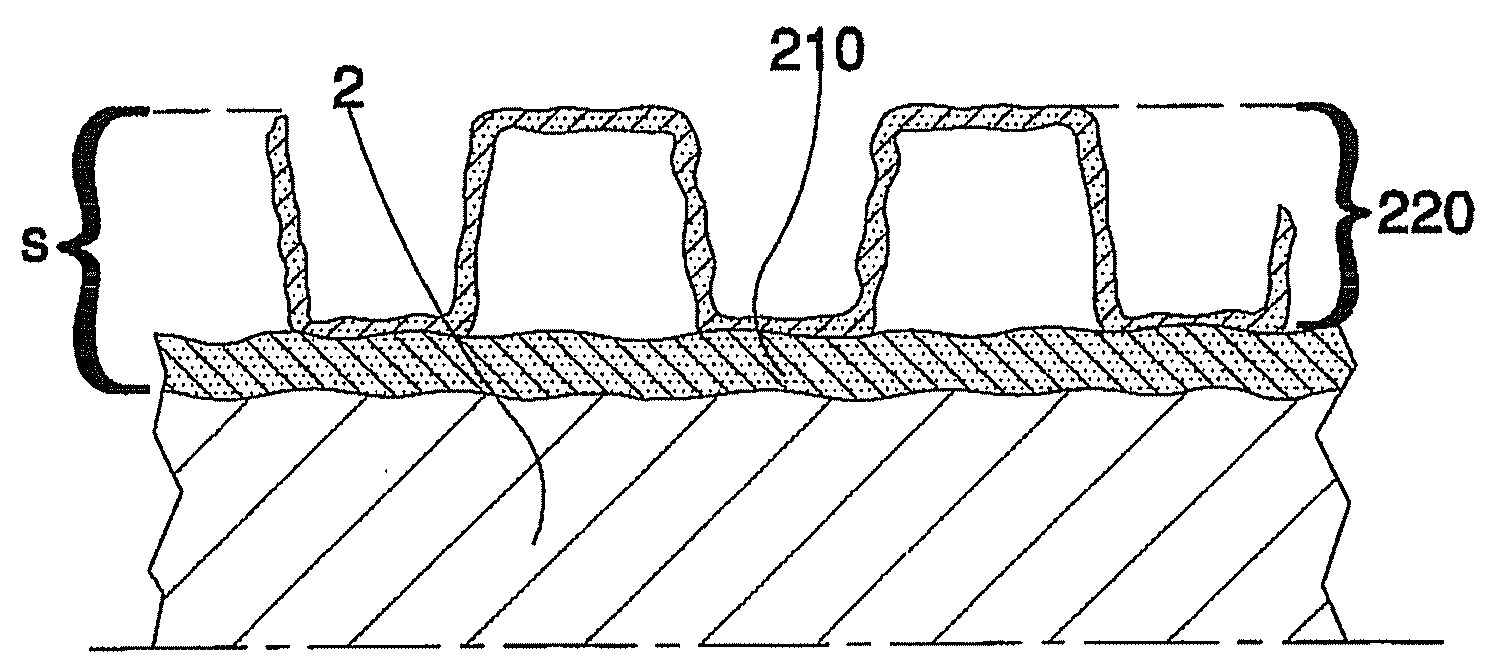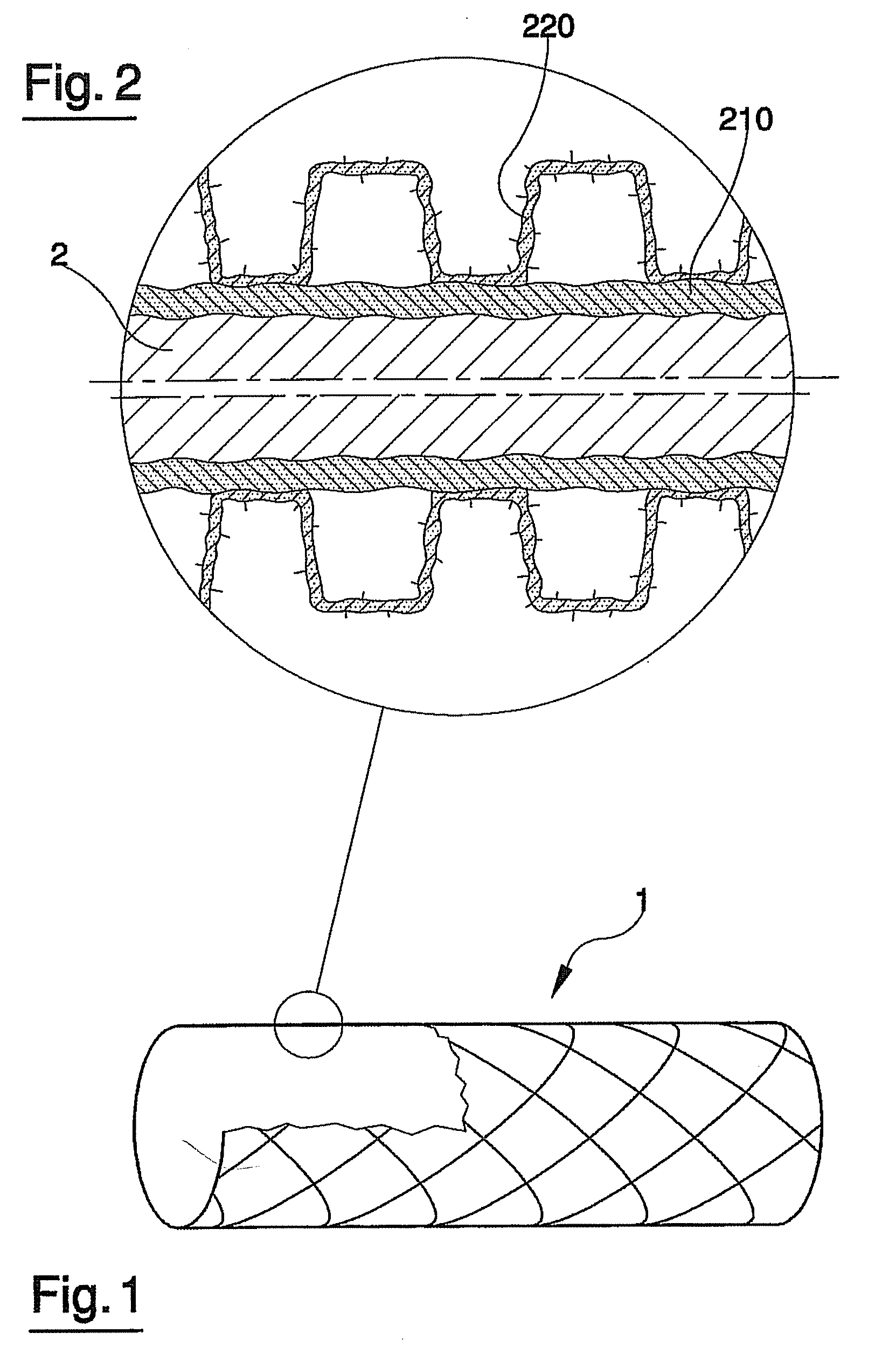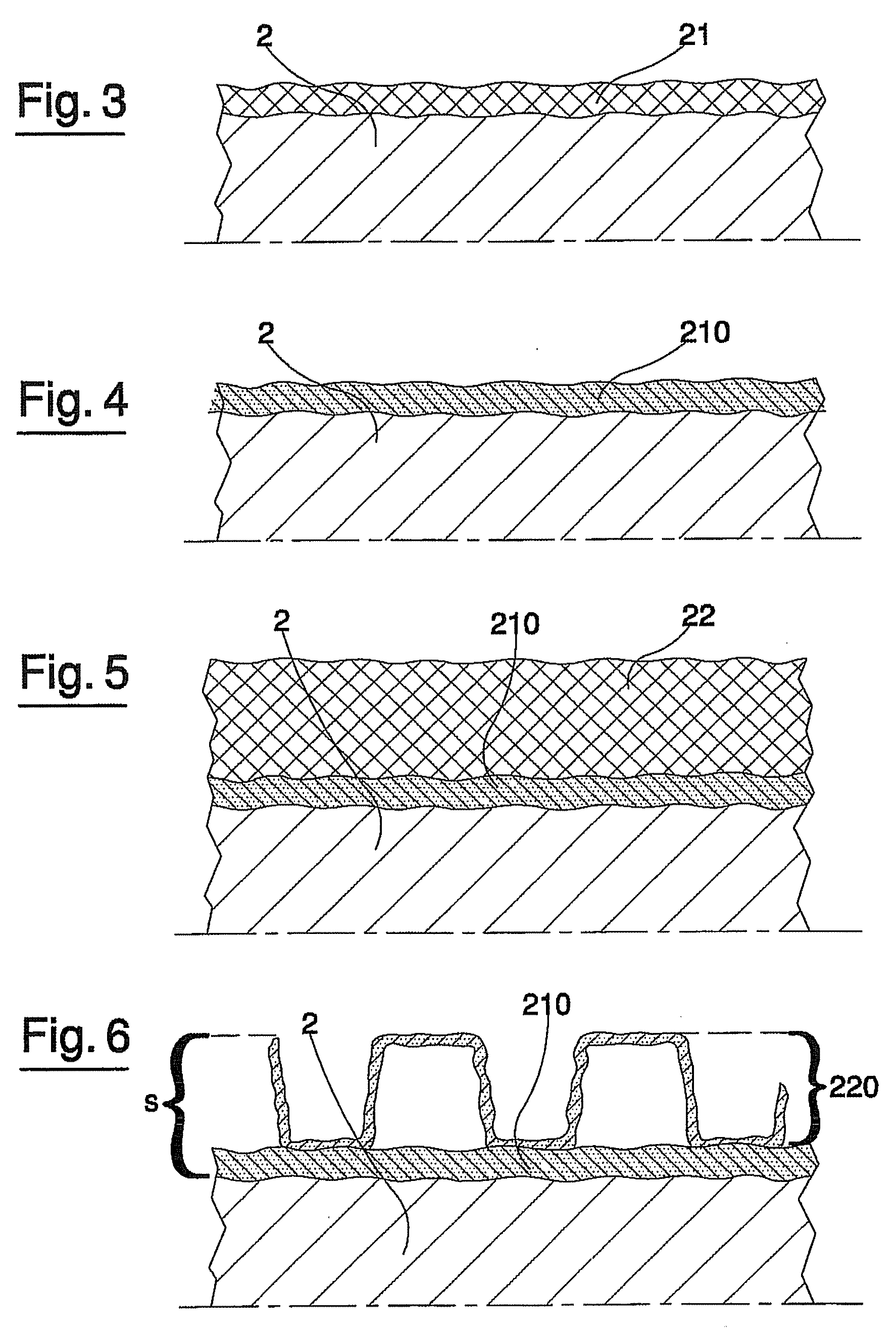Method for Production of a Coated Endovascular Device
a technology of endovascular devices and coatings, applied in the field of cardiac medical, can solve the problems of reducing the effect of the stent, provoking an allergic reaction, and restrainting the stent, so as to reduce the risk of thrombosis, avoid blood flow turbulence, and reduce platelet activation.
- Summary
- Abstract
- Description
- Claims
- Application Information
AI Technical Summary
Benefits of technology
Problems solved by technology
Method used
Image
Examples
Embodiment Construction
[0030]In the following the word stent will be used with the above defined extended meaning.
[0031]Referring to the enclosed drawings, it is indicated as 1 a stent according to the present invention.
[0032]The stent 1 has a tubular, metallic, flexible and substantially cylindrical body 2 that is made of, for example, a metallic closed net. As an indication, the metallic net can be produced from a stainless steal tube with a circular section by laser cutting. The tubular body 2, generally, is made of a processable material with a high fatigue resistance, as stainless steel 316L. Other kinds of materials are also possible to be used, like the following:[0033]different inert and biocompatible metallic alloy, and in particular of CoCr alloy, as L605 (Co-20Cr-15W-10Ni), Co-28Cr-6Mo, Co-35Ni-20Cr-10Mo, Co-20Cr-16Fe-15Ni-7Mo, because of its major elasticity, that reduces the risk and the entity of micro-fracture during crimping and expansion phases, and the possibility to maintain the same ch...
PUM
| Property | Measurement | Unit |
|---|---|---|
| thickness | aaaaa | aaaaa |
| thickness | aaaaa | aaaaa |
| thickness | aaaaa | aaaaa |
Abstract
Description
Claims
Application Information
 Login to View More
Login to View More - R&D
- Intellectual Property
- Life Sciences
- Materials
- Tech Scout
- Unparalleled Data Quality
- Higher Quality Content
- 60% Fewer Hallucinations
Browse by: Latest US Patents, China's latest patents, Technical Efficacy Thesaurus, Application Domain, Technology Topic, Popular Technical Reports.
© 2025 PatSnap. All rights reserved.Legal|Privacy policy|Modern Slavery Act Transparency Statement|Sitemap|About US| Contact US: help@patsnap.com



